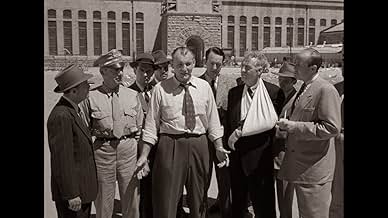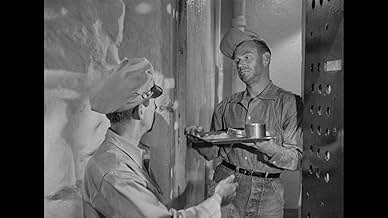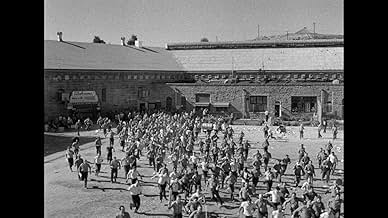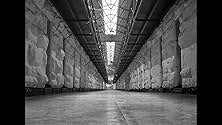Agrega una trama en tu idiomaFed up with the inhumane prison living conditions, a general prison riot breaks out, leading to hostage-taking, a stand-off with the guards and eventual negotiations with the prison administ... Leer todoFed up with the inhumane prison living conditions, a general prison riot breaks out, leading to hostage-taking, a stand-off with the guards and eventual negotiations with the prison administration officials.Fed up with the inhumane prison living conditions, a general prison riot breaks out, leading to hostage-taking, a stand-off with the guards and eventual negotiations with the prison administration officials.
- Nominada a2premios BAFTA
- 3 nominaciones en total
Opiniones destacadas
The droning voice-over that opens the movie doesn't bode well: It warns of a wave of riots throughout penitentiaries across the country and even takes us to a criminal-justice convention in Toronto where the topic is aired. But soon we're inside Cell Block 11, part of a run-down, overcrowded institution whose warden (Emile Meyer) has been campaigning for reforms, to no avail. (Standing up for convicted criminals, then and now, is political suicide.) When opportunity knocks, the inmates take over the asylum. What they want is press coverage of their quite moderate demands: More elbow room, separate facilities for the mentally ill among them, job training. But they've taken guards as hostages, and threaten to execute them if their demands aren't met.
Leader of the rebels is Neville Brand, who tries to negotiate in good faith, but Meyer has one hand tied behind his back by Frank Faylen, a hard-line state bureaucrat. Brand, too, has trouble keeping the prisoners in line, particularly those who see the riot less as a cause than as a chance for some cheap thrills. Siegel manages to keep the story taut within the claustrophobic confines of the prison and without too much in the way of splashy incident, until he brings it to a surprisingly rueful end. Somehow, he has managed to make an issues movie told almost solely through action.
Siegel's career proved that he had more sides to him than he's generally known for. He started out cutting montages in other directors' movies (Blues in the Night and The Hard Way among them); when he moved into directing, his early work showed range in style and tone: The period thriller The Verdict, the light-hearted noir The Big Steal, the eschatological drama Night Unto Night. Too bad we can't remember him by saying that he just got better and better, because, unfortunately, it just isn't so.
The storyline starts quickly with a group of prisoners taking their warders hostage and barricading themselves in their cell block. Narrative then follows the proceedings to their conclusion, the action never straying from the prison itself.
Film succeeds mainly as a result of not having any forced characters - none of the prisoners are particularly likable and there are none of the usual dumb characterisations usually found in prison movies. The various authority figures deal with the situation they are presented with in a matter of fact way, and the films stark style remains through to the end.
As I was watching 'Riot in Cell Block 11' I was dreading some wise old sage prisoner coming out of the woodwork, due for parole the following week, who was somehow going to contrive to get himself shot just as the riot was coming to a close, to enjoy a lengthy death scene in someone's arms. Thank goodness nothing like this occurs.
Film made me think of 'Killer's Kiss', in that they are both 1950's low-budget movies with great potential, from a soon-to-be famous director. 'Riot in Cell Block 11' succeeds in all areas, and while its targets may be low it certainly deserves more recognition.
The prisoners make their demands known, and they want them printed in the papers for all the public to see. They want to be involved in a work program instead of sitting idle; they want the jail to be less crowded and better organized. If their needs are not met, guards will be killed, and the blame will be placed on the penal system authorities. The liberal warden of the prison actually wants to grant their demands, but his budget is constrained by politicians far removed from the system, and thus he is helpless as the clock ticks down.
The film is non-stop excitement and drama. I liked seeing the relationship between the prisoners, and their roles in the revolt. Neville Brand, with a gravelly voice and a build like a Sherman tank, is perfectly cast as the group leader and negotiator.
The movie is based on a story of an actual prison riot in the 1950s, and producer Walter Wanger's experiences as an inmate. Isn't it odd that celebrities get religion on the issue of prison reform AFTER they have been behind bars? Dan Rostenkowski comes to mind too.
The resulting 1954 80 minute gritty drama, almost an unprecedented certificate 15, even now, was directed by Don Siegel. Following a popular format in those days, it starts off with a social documentary approach, complete with concerned voice-over - that this is a public announcement, part expose, part drama. It is not based on fact, at least not from one singular incident.
As you might expect, we follow prison guards (my title is the warning given to them, as they arm-up to thwart the riot), politicians and those who shape policy and of course, a handful of inmates. These provide everyday backbone; their tales are simple and uncomplicated and it's impossible to not side with them, or at least their plight. As ring- leaders take guards hostage, it becomes a nail-biting cat and mouse scenario, with Dunn (Neville Brand) producing ultimatums. Warden Emile Meyer wants negotiation, state officials want only swift force.
The film is well made and tautly directed, efficient but doesn't feel rushed. The version I saw on TCM (Turner Classic Movies) had a slight green cast but was generally good. I imagine that Riot In would have been compelling and possibly controversial viewing for cinema goers. It would have found favour especially amongst those who liked the hard crime film-noir type of dramas of the day, but without any of the glamour of femme fetales.
My guess is that whilst many prison dramas had been made at this point, they were character-lead and not out to socially comment. This would have been as hard-hitting as any TV '60 Minute' (etc) documentary and because it's still a good and credible film, it's still within the public domain, though is rarely shown and expensive to buy.
Cell Block 11 in this particular prison is the solitary ward, the place where the toughest cases are assigned. With a pair like Neville Brand and Leo Gordon in that block would you think otherwise.
Anyway to protest the conditions they're in the prisoners led by Brand stage a riot where they take the guards assigned to that block hostage. When Brand is wounded in a quarrel, Leo Gordon takes over leadership and he's belonging in the psycho ward. But he's the toughest guy in the joint and nobody is going to argue with him.
Emile Meyer does a great job as the warden who is a decent and compassionate individual trying to affect a few reforms. His pleas fall on deaf ears because then as now, convicts don't have any votes and by definition they are an anti-societal group. Meyer's humanity is contrasted with that of Frank Faylen who is a political appointee and tries a grandstand play with the convicts that almost gets him killed.
This is as realistic a prison drama as you will ever get. Big accolades go here to Walter Wanger who had an incredible unique perspective of life on the inside and turned it with Don Siegel's help into a great motion picture.
¿Sabías que…?
- TriviaLeo Gordon had served five years for armed robbery at San Quentin State Prison. For this reason, Heinze, the Folsom warden, originally objected to Gordon appearing in the film, but director Don Siegel was able to convince him that Gordon was no threat to the prison.
- ErroresWhen the state police force the convicts back into the prison by launching a barrage of tear gas at them, the police move forward, into the area being bombarded. The convicts are overcome by the gas, but the police aren't - even though they're not wearing gas masks and are enshrouded by the same gas the convicts are.
- Citas
Warden Reynolds: I promise you no harm will come to you during this conversation. Guard! These are my instructions. Dunn is to be allowed to come into this yard and return to 11 without interference.
- Créditos curiososThe following acknowledgment appears after the opening credits: "We wish to thank Mr. Richard A. McGee and his staff of the California Department of Corrections, Warden Heinze, Associate Warden Ryan, Correctional officers and the inmates of Folsom Prison for their co-operation."
- ConexionesEdited into Crashout (1955)
Selecciones populares
- How long is Riot in Cell Block 11?Con tecnología de Alexa
Detalles
- Fecha de lanzamiento
- País de origen
- Idioma
- También se conoce como
- Terror in Block 11
- Locaciones de filmación
- Productora
- Ver más créditos de la compañía en IMDbPro
Taquilla
- Presupuesto
- USD 298,780 (estimado)
- Tiempo de ejecución1 hora 20 minutos
- Color
- Relación de aspecto
- 1.37 : 1
Contribuir a esta página



































